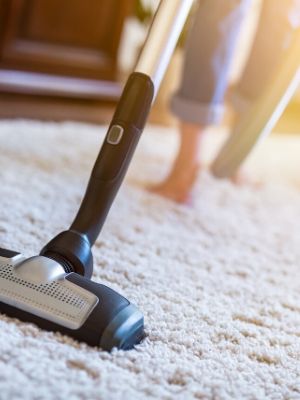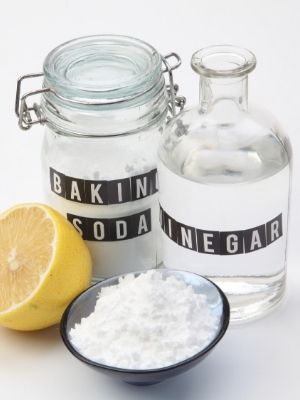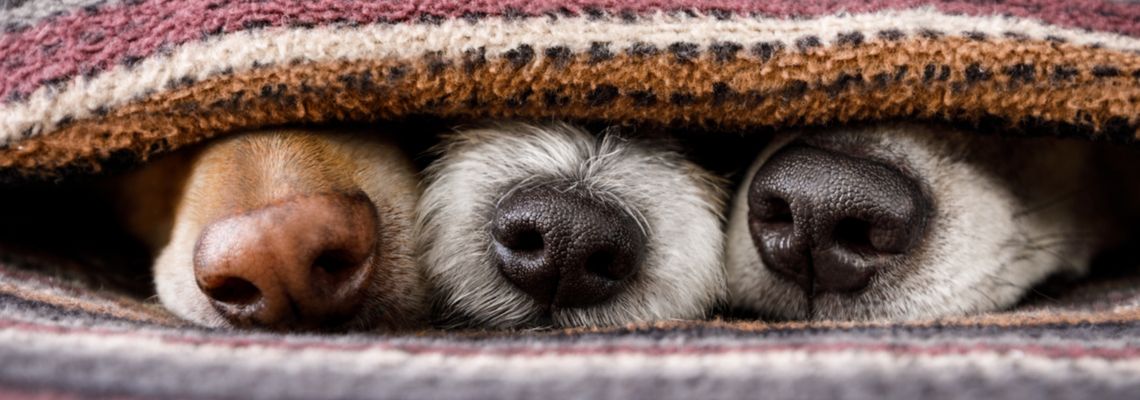While not unavoidable, pets and pet problems are a big part of being a landlord. If a landlord has a Pets Allowed rental property, they open themselves up to a larger number of loyal renters, which is great. They may have a higher security deposit to deal with those scratches and smells, or maybe they have specialized tenant screening and pet screening just to double down. Having pet allowances gives some great leeway in selecting the surplus of tenants eager to have Fido at their side but at the same time, they open themselves up to all the smells and stains that come with. Pet odor is musky, instantly noticeable, and a large turn off to future potential applicants. When cleaning up, you need to know how to make sure it is gone.
While not unavoidable, pets and pet problems are a big part of being a landlord. If a landlord has a Pets Allowed rental property, they open themselves up to a larger number of loyal renters, which is great. They may have a higher security deposit to deal with those scratches and smells, or maybe they have specialized tenant screening and pet screening just to double down. Having pet allowances gives some great leeway in selecting the surplus of tenants eager to have Fido at their side but at the same time, they open themselves up to all the smells and stains that come with. Pet odor is musky, instantly noticeable, and a large turn off to future potential applicants. When cleaning up, you need to know how to make sure it is gone.
Dander and Hair
Eliminating pet odor calls for a good plan and you can’t skip step one. Skin cells, fur shed, dirt, everything that falls under ‘dander’ needs to be removed. Vacuum, sweep, dust and mop every surface with care. You need to be gentle as you do this: unrestrained movement while sweeping and dusting can cause the pet particles to move up into the air. From there, the dander will circulate throughout the property and make your job that much more difficult as it undoes whatever work you’re currently doing. Consider doing this more than once, especially with the more shed-friendly animals.
Dander and Hair
Eliminating pet odor calls for a good plan and you can’t skip step one. Skin cells, fur shed, dirt, everything that falls under ‘dander’ needs to be removed. Vacuum, sweep, dust and mop every surface with care. You need to be gentle as you do this: unrestrained movement while sweeping and dusting can cause the pet particles to move up into the air. From there, the dander will circulate throughout the property and make your job that much more difficult as it undoes whatever work you’re currently doing. Consider doing this more than once, especially with the more shed-friendly animals.

Steam Cleaning
For those deep-set odors, you’ll need some steam cleaning. Clean out the furniture (if there is any staples you keep there) until the room is empty, and call out your friendly neighborhood carpet cleaner. Carpet fibers are very porous which means they will absorb and hold on to odors and using steam is a great way to clean the soft texture. The steam reaches 360 degrees Fahrenheit with low pressure of 150 psi which helps create the excellent deep clean you need. By loosening the carpet strands, all the dander, stains, and allergens makes pet odor removal that much easier.

Steam Cleaning
For those deep-set odors, you’ll need some steam cleaning. Clean out the furniture (if there is any staples you keep there) until the room is empty, and call out your friendly neighborhood carpet cleaner. Carpet fibers are very porous which means they will absorb and hold on to odors and using steam is a great way to clean the soft texture. The steam reaches 360 degrees Fahrenheit with low pressure of 150 psi which helps create the excellent deep clean you need. By loosening the carpet strands, all the dander, stains, and allergens makes pet odor removal that much easier.
Laundry
Any fabric that can be washed, should be washed. If the property comes with furniture, make sure to wash pillow covers on the sofas, bed linens such as mattress pads, throw pillows, etc. If you can get the drapes, that’s even better. Consider adding baking soda to your laundry detergent and washing again with cleaner designed for pet odors or enzymatic cleaner.
If you have curtains and drapes, consider having them dry cleaned. According to Consumer Reports, this can help prevent shrinkage, which linings and seams are prone to do. Goodhousekeeping.com recommends not only vacuuming curtains, but if you don’t want to shill out for a dry cleaner, soaking them in cold water. If you use a standard washing machine, use the delicates option.
Vinegar and Baking Soda
These two products are powerful odor cleaners. Baking soda can be used on many surfaces, hard or soft, to tackle odors at the source. Some say using the two together makes for good cleaning, as the chemical reaction causes fizzing and bubbling that dislodges grease and grit. This is because one is an acid and the other is a base, but once the reaction is done, you’re practically left with water.
Separately, these two products are cleaning powerhouses. Use baking soda on parts of upholstery that don’t quite fit in a laundry machine (after spot testing) and scrub it away. Pour some white vinegar in a spray bottle and spritz it in the air and on fabric to keep things fresh. Put some baking soda in the laundry to help with the odor there, too, and mop the floors with a vinegar and water mixture.

Laundry
Any fabric that can be washed, should be washed. If the property comes with furniture, make sure to wash pillow covers on the sofas, bed linens such as mattress pads, throw pillows, etc. If you can get the drapes, that’s even better. Consider adding baking soda to your laundry detergent and washing again with cleaner designed for pet odors or enzymatic cleaner.
If you have curtains and drapes, consider having them dry cleaned. According to Consumer Reports, this can help prevent shrinkage, which linings and seams are prone to do. Goodhousekeeping.com recommends not only vacuuming curtains, but if you don’t want to shill out for a dry cleaner, soaking them in cold water. If you use a standard washing machine, use the delicates option.

Vinegar and Baking Soda
These two products are powerful odor cleaners. Baking soda can be used on many surfaces, hard or soft, to tackle odors at the source. Some say using the two together makes for good cleaning, as the chemical reaction causes fizzing and bubbling that dislodges grease and grit. This is because one is an acid and the other is a base, but once the reaction is done, you’re practically left with water.
Separately, these two products are cleaning powerhouses. Use baking soda on parts of upholstery that don’t quite fit in a laundry machine (after spot testing) and scrub it away. Pour some white vinegar in a spray bottle and spritz it in the air and on fabric to keep things fresh. Put some baking soda in the laundry to help with the odor there, too, and mop the floors with a vinegar and water mixture.
Cat Odor
The thing about cats is when they have an odor, they really have an odor. Some people ask if it is even possible to remove pet odor when it’s a cat odor. If your using pet tenant screening, you could find out if it is an older cat that might have bladder control issues, or ask applicants about frequent urinary tract infections. See if the previous landlord has anything to say.
When a cat misses the litter box, you can be left with a problem that lasts for years. Because the urine contains uric acid, the remains can recrystallize when the air is particularly humid, causing the smell to resurface. It sticks to carpet and hardwood, carpet and fabrics for ages. One of the modern suggestions is using an enzyme cleaner, which works by breaking down the different types of stains and the acid in cat urine that makes it so smelly. It also helps prevent remarking in the same spot by removing those odors.
Taking care of your property after a pet has stayed there for so long can be a bit of a hassle, but it isn’t impossible. Before accepting new renters, consider attaching a list of effective pet cleaning resources with their copy of the lease at move-in.
Cat Odor
The thing about cats is when they have an odor, they really have an odor. Some people ask if it is even possible to remove pet odor when it’s a cat odor. If your using pet tenant screening, you could find out if it is an older cat that might have bladder control issues, or ask applicants about frequent urinary tract infections. See if the previous landlord has anything to say.
When a cat misses the litter box, you can be left with a problem that lasts for years. Because the urine contains uric acid, the remains can recrystallize when the air is particularly humid, causing the smell to resurface. It sticks to carpet and hardwood, carpet and fabrics for ages. One of the modern suggestions is using an enzyme cleaner, which works by breaking down the different types of stains and the acid in cat urine that makes it so smelly. It also helps prevent remarking in the same spot by removing those odors.
Taking care of your property after a pet has stayed there for so long can be a bit of a hassle, but it isn’t impossible. Before accepting new renters, consider attaching a list of effective pet cleaning resources with their copy of the lease at move-in.







